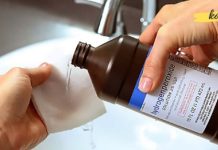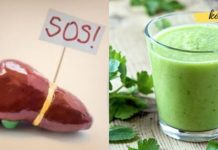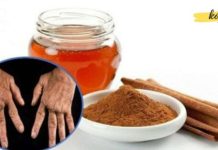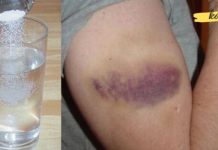How to Remove Harmful Pesticides from Fruits and Vegetables — A Trick I Learned from a Farmer!
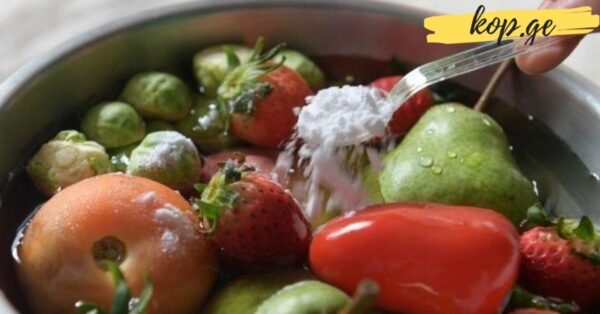
Summer has finally arrived, and with it comes a colorful explosion of fresh fruits and vegetables at markets and grocery stores. Watermelons, melons, peaches, nectarines, plums, apricots, and so many more delicious seasonal treats fill the stands. While it’s tempting to indulge in these juicy delights, there’s one concern that lingers in the back of every health-conscious person’s mind: pesticides.
It’s an unfortunate truth — most of the produce we consume is treated with pesticides during cultivation. These chemicals are used to protect crops from harmful insects, mold, and diseases, and while they serve a purpose in farming, their residue can pose potential risks to human health.
Even if you buy your produce from a trusted source — like a friendly local vendor or your favorite “grandma” at the farmer’s market — there’s still no absolute guarantee that the fruits or vegetables are 100% free from harmful substances. Pesticides and other agrochemicals can linger on the surface of produce and, in some cases, even seep into the skin.
That’s why today we’re sharing simple yet highly effective methods for cleaning fruits and vegetables — methods taught to me by a farmer who truly cares about safe and healthy food.
If you’re someone who values what goes into your body and the health of your family, read on. This might just be one of the most useful things you’ll learn all summer.
Why You Should Clean Your Produce Thoroughly
Pesticides are often toxic to more than just pests. Many contain carcinogenic compounds, hormone disruptors, and neurotoxins. Over time, repeated exposure — even in small amounts — can potentially lead to health issues. Children, pregnant women, and people with weakened immune systems are especially vulnerable.
Washing your produce with plain water can remove dirt and some bacteria, but it’s not enough to eliminate pesticide residue. That’s where these farmer-approved tricks come in.
The Two-Ingredient Method: Vinegar and Water
One of the most effective and affordable ways to clean produce is by using a solution of vinegar and water. This combination helps kill bacteria, neutralize chemicals, and break down residues on the surface of fruits and vegetables.
Here’s how to do it:
Ingredients:
3 parts water
1 part white vinegar (apple cider vinegar works too)
Instructions:
Mix the water and vinegar in a large bowl or basin.
Add your fruits or vegetables to the mixture.
Let them soak for 10–20 minutes.
After soaking, rinse the produce thoroughly under clean running water.
Pat dry with a clean towel.
This method can eliminate up to 98% of bacteria and significantly reduce pesticide residues. It’s gentle, effective, and completely natural.
Alternatively, if you prefer a quicker method, pour the vinegar-water solution into a spray bottle, spritz your fruits and veggies generously, let them sit for about 10 minutes, then rinse well with water.
Other Powerful Natural Cleaning Mixtures
If you’re looking for alternatives to vinegar, here are two more effective combinations you can try at home:
1. Lemon Juice, Baking Soda, and Water
Ingredients:
1 tablespoon of fresh lemon juice
1 cup of water
2 tablespoons of baking soda
Mix all the ingredients in a bowl or spray bottle. Soak or spray your fruits and vegetables, let sit for 10–15 minutes, then rinse thoroughly.
Why it works:
Lemon juice has natural antibacterial properties, and baking soda is excellent for breaking down pesticide residue and dirt.
2. Lemon Juice, Apple Cider Vinegar, and Water
Ingredients:
1 tablespoon lemon juice
1 cup of water
2 tablespoons apple cider vinegar
This mixture not only helps cleanse the surface of your produce but also leaves a fresh, clean scent behind. After soaking, rinse thoroughly with water before eating or storing.
For Heavily Contaminated Produce: Peel It
While natural washing solutions do a great job, there are some cases where pesticides are so deeply embedded in the skin that even the best cleaning methods can’t remove them completely.
In these situations, it’s safest to peel the skin off — especially for:
Apples
Cucumbers
Peaches
Plums
Zucchinis
Eggplants
It’s true that many nutrients and fibers are found in the skin of fruits and vegetables, but when health is at stake, it’s a reasonable trade-off.
Remember: if the produce is highly glossy or waxy, that’s often a sign of chemical coatings used for preservation or appearance. These can be particularly tough to remove, and peeling may be the best option.
A Few More Tips for Cleaner Eating
Buy organic when possible, especially for produce that ranks high in pesticide residue, like strawberries, spinach, and apples.
Wash your hands before and after handling produce.
Clean your cutting boards and knives to prevent cross-contamination.
Don’t wash produce too early. Wash it right before use to maintain freshness and prevent premature spoilage.
Share the Knowledge
If you found these tips helpful, don’t keep them to yourself! Share them with your friends, family, and anyone who values safe, healthy eating. It only takes a few minutes a day to protect your household from unnecessary chemical exposure.
You don’t need fancy products or expensive produce washes — just a few kitchen staples and a little know-how can go a long way. Trust us, these methods are the best ways to remove harmful pesticides from fruits and vegetables, and they’ve been used by those who understand food safety best: farmers themselves.
So the next time you come home with a basket full of fresh summer fruit, take an extra 10 minutes to wash it properly. Your body will thank you.





